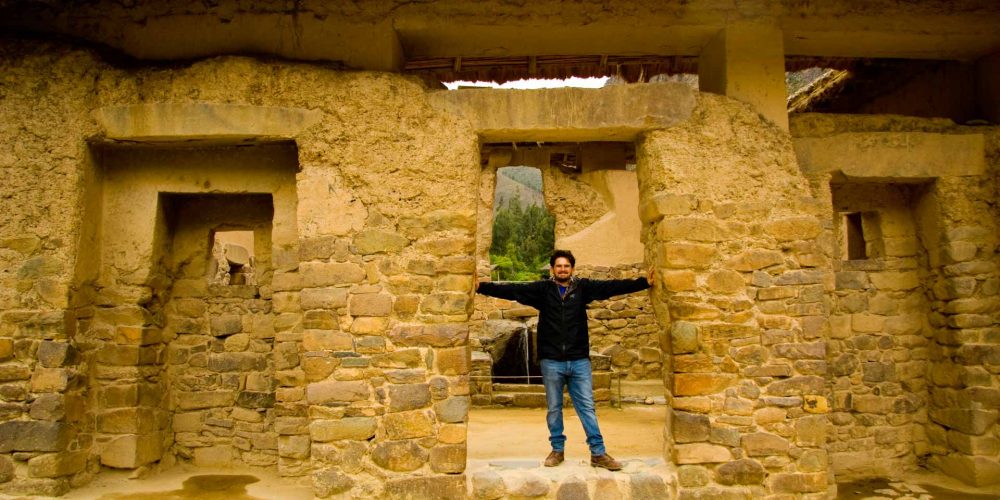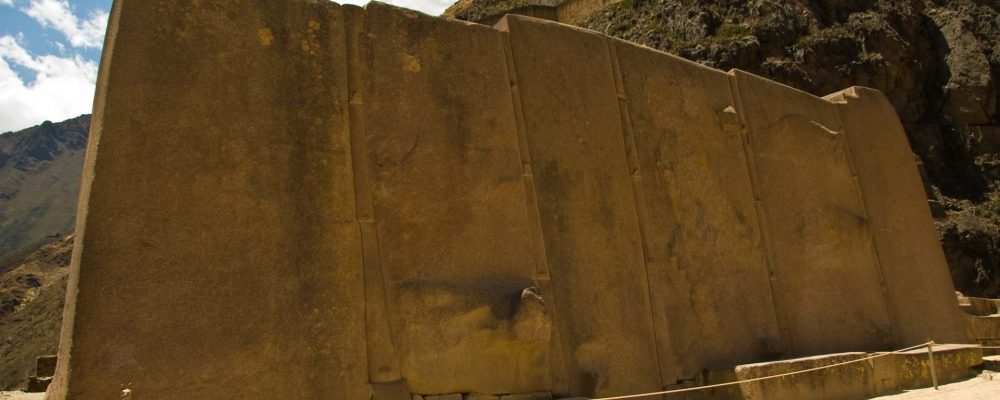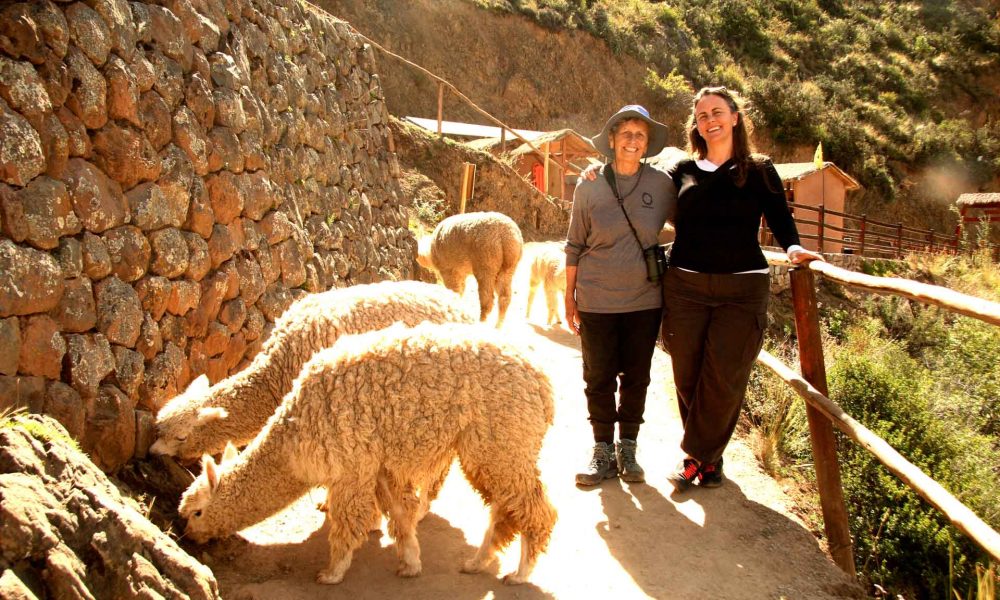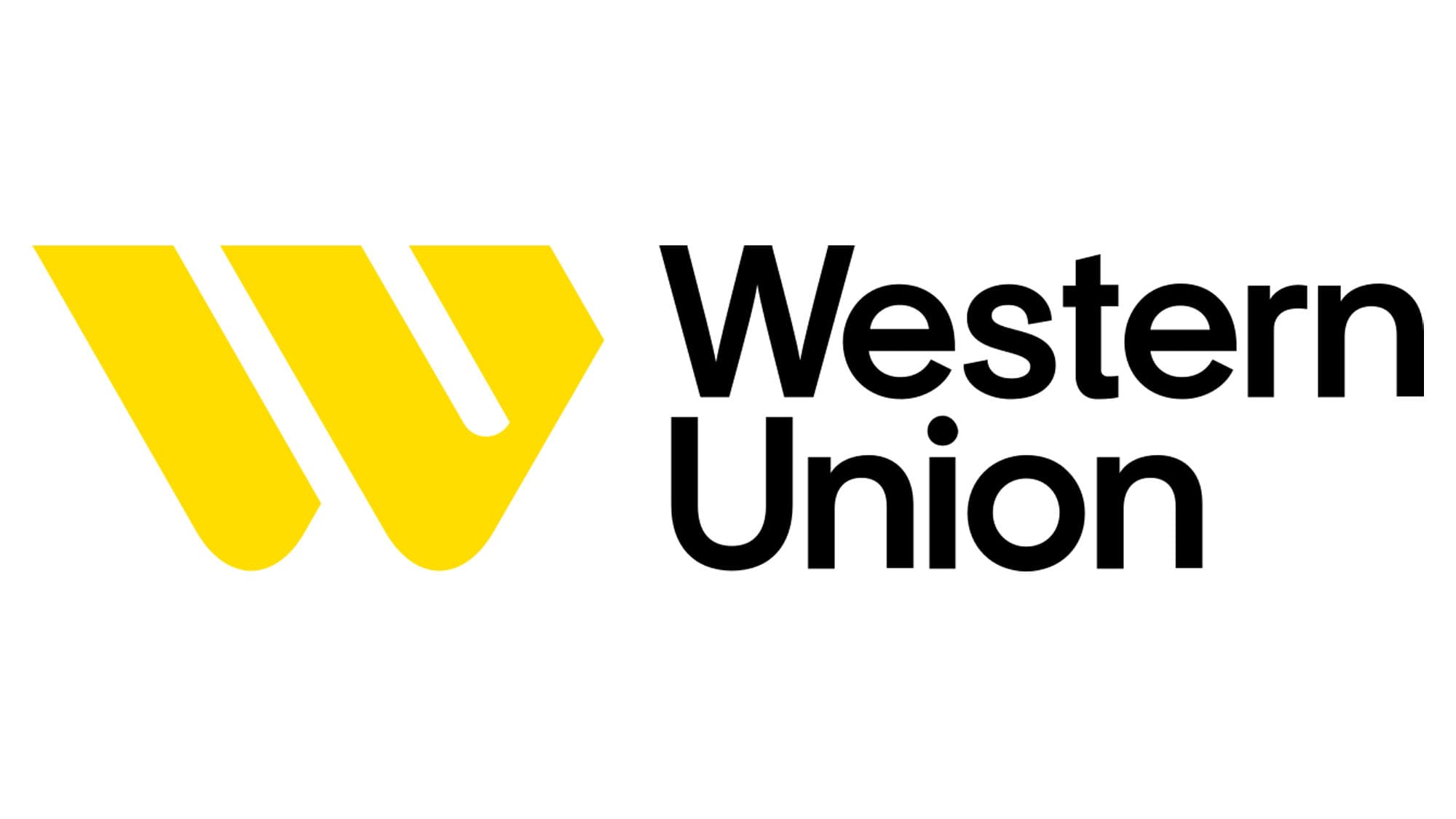Sacred Valley
The Sacred Valley is a popular destination for tourists en route to Machu Picchu, one of the New Seven Wonders of the World. Visitors often explore the valley’s archaeological sites, markets, and experience the local culture. The proximity to Cusco and the convenient transportation links make it a gateway for those embarking on the Inca Trail to Machu Picchu.

Table of Contents
Overview
The Sacred Valley, or Valle Sagrado in Spanish, is a picturesque region in the Andes Mountains near Cusco, Peru. Renowned for its stunning landscapes, ancient ruins, and vibrant indigenous culture, the Sacred Valley has become a popular destination for tourists seeking a deeper understanding of the rich history of the Inca civilization.
History

The Sacred Valley, or Valle Sagrado, is a region in the Andes of Peru, located near the city of Cusco. This valley holds great historical and cultural significance, as it was once the heartland of the Inca Empire. The history of the Sacred Valley is deeply intertwined with the rise and fall of one of the most powerful and advanced civilizations in the pre-Columbian Americas.
Inca Civilization (15th-16th century):
The Inca civilization, which flourished from the 15th to the 16th century, considered the Sacred Valley as a crucial agricultural and spiritual center. The valley’s fertile soil and mild climate provided an ideal environment for cultivation, allowing the Inca people to grow a variety of crops such as maize, potatoes, and quinoa. The Incas also recognized the sacred nature of the landscape, attributing spiritual significance to the Urubamba River that flows through the valley.
Strategic Importance:
The location of the Sacred Valley was not only agriculturally advantageous but also strategically important. The valley served as a buffer zone, protecting Cusco, the capital of the Inca Empire, from potential invasions by rival civilizations. The Incas built numerous agricultural terraces, irrigation systems, and fortifications in the valley, showcasing their advanced engineering and architectural skills.
Inca Ruins and Sites:
The Sacred Valley is dotted with impressive archaeological sites that stand as a testament to the Inca’s architectural prowess. Among the notable ruins is Ollantaytambo, a well-preserved Inca town with impressive stone terraces and structures. Pisac, another significant site, features agricultural terraces and a hilltop citadel. These ruins not only showcase the Inca’s mastery of construction but also provide insight into their religious and agricultural practices.
Role in Inca Religion:
The Sacred Valley played a central role in the Inca religious cosmology. The Incas believed that the valley was a sacred reflection of the Milky Way, and the surrounding mountains held spiritual significance. Intihuatana, a ritual stone associated with the Inca sun god, was erected in the Sacred Valley at the site of Pisac, reinforcing the valley’s importance in Inca religious ceremonies.
Spanish Conquest (16th century):
The arrival of the Spanish conquistadors, led by Francisco Pizarro, marked the end of the Inca Empire. In 1532, the Battle of Cajamarca took place, where the Inca emperor Atahualpa was captured, leading to the downfall of Inca civilization. The Sacred Valley, along with Cusco, fell into Spanish hands, and the conquerors repurposed many Inca structures for their own colonial architecture.
Today, the Sacred Valley remains a captivating destination for visitors from around the world, drawing them to explore its rich history, stunning landscapes, and ancient ruins that echo the greatness of the Inca civilization
Things to do
The Sacred Valley, located near Cusco, Peru, is a stunning and historically rich region that offers visitors a plethora of activities to explore. Here are some recommendations for things to do in the Sacred Valley:
Visit Pisac Market:
The town of Pisac hosts a vibrant market where you can shop for local handicrafts, textiles, and souvenirs. The market takes place every day, but it’s especially lively on Sundays when local vendors gather to sell their products.
Explore Ollantaytambo:
Ollantaytambo is a well-preserved Inca town with narrow cobblestone streets and impressive stone terraces. Visit the archaeological site, Ollantaytambo Fortress, which served as both a temple and a fortress during the Inca Empire.
Marvel at Moray:
Moray is an archaeological site featuring circular terraces that served as an agricultural laboratory for the Incas. The temperature difference between each terrace allowed the Incas to experiment with different crops.
Discover Maras Salt Mines:
The Maras Salt Mines are a series of salt pans that have been used since Inca times. The view of the intricate salt pools against the backdrop of the surrounding mountains is a unique and picturesque sight.
Hike to the Pinkuylluna Inca Storehouses:
For those seeking a bit of adventure, consider hiking to the Pinkuylluna Inca storehouses overlooking Ollantaytambo. The hike offers stunning views of the town and the surrounding landscape.
Take a Scenic Train Ride to Machu Picchu:
The Sacred Valley serves as a gateway to Machu Picchu. Consider taking the train from Ollantaytambo to Aguas Calientes for a scenic journey with breathtaking views of the Andes.
Relax in the Hot Springs of Lares:
If you’re looking for some relaxation, head to the hot springs in Lares. These natural thermal baths provide a soothing experience amid the beautiful mountain scenery.
Explore Chinchero:
Chinchero is known for its well-preserved Inca walls and the beautiful colonial church built on the foundations of an Inca temple. Don’t miss the traditional weaving demonstrations where locals showcase their intricate weaving techniques.
Engage in Outdoor Activities:
The Sacred Valley offers various outdoor activities such as horseback riding, mountain biking, and zip-lining. Take advantage of the breathtaking landscapes while enjoying some adrenaline-pumping adventures.
Participate in a Traditional Pachamanca Feast:
Experience Peruvian cuisine and culture by participating in a Pachamanca feast. This traditional Andean cooking method involves using hot stones to cook meat, potatoes, and vegetables underground.
With its mix of history, culture, and natural beauty, the Sacred Valley provides a diverse range of activities for every type of traveler. Whether you’re interested in archaeological sites, outdoor adventures, or cultural experiences, the Sacred Valley has something to offer for everyone.
Sacred Valley Villages
The Sacred Valley of the Incas, located near Cusco in Peru, is a region renowned for its stunning landscapes, rich history, and ancient archaeological sites. Nestled between the towns of Pisac and Ollantaytambo, the valley is dotted with picturesque villages that offer a glimpse into the traditional Andean way of life.
One of the notable villages in the Sacred Valley is Pisac. Famous for its vibrant market, held every day but particularly bustling on Sundays, Pisac attracts both locals and tourists seeking handcrafted goods, textiles, and fresh produce. The village is also home to impressive Inca ruins that perch on a hill overlooking the valley. The Pisac Ruins include agricultural terraces, temples, and residential areas, showcasing the architectural prowess of the ancient Incas.
Further along the valley, Ollantaytambo stands as another charming village with a rich history. This village is home to one of the best-preserved Inca fortresses in Peru, the Ollantaytambo Ruins. The complex includes agricultural terraces, temples, and residential structures. Ollantaytambo played a significant role in Inca history as both a ceremonial center and a strategic military stronghold.
The village of Chinchero is another gem in the Sacred Valley. Known for its traditional weaving techniques, Chinchero offers visitors the chance to witness skilled artisans creating intricate textiles using ancient methods. The village is also home to a colonial church built on the foundations of an Inca temple, blending indigenous and Spanish influences.
Moray is yet another interesting site in the Sacred Valley, featuring unusual circular terraces that served as an agricultural laboratory for the Incas. The varying temperatures at each terrace level allowed the Incas to experiment with different crops and determine optimal growing conditions.
These villages not only showcase the enduring cultural heritage of the Andean people but also serve as gateways to explore the surrounding natural beauty. The Sacred Valley is flanked by stunning mountains and traversed by the Urubamba River, providing a breathtaking backdrop for the traditional villages that have stood the test of time.
Whether exploring ancient ruins, vibrant markets, or witnessing traditional crafts, a visit to the Sacred Valley villages in Cusco offers a profound and immersive experience into the rich tapestry of Peruvian history and culture.
Hotels

The Sacred Valley, located near Cusco in Peru, is a stunning region known for its breathtaking landscapes, Inca ruins, and indigenous culture. As tourism has grown in the area, so has the availability of accommodation options, ranging from quaint guesthouses to luxury hotels. Here are some notable hotels in the Sacred Valley, each offering a unique experience for travelers:
Tambo del Inka, a Luxury Collection Resort & Spa:
This five-star resort is known for its luxurious accommodations and impeccable service. Situated in Urubamba, Tambo del Inka offers stunning views of the surrounding mountains and features elegant rooms, a spa, and an outdoor pool. Guests can also enjoy fine dining at the hotel’s restaurant, which serves a blend of Peruvian and international cuisine.
Sol y Luna – Relais & Châteaux:
Sol y Luna is a charming hotel that combines luxury with a deep appreciation for local culture. The property is set in a beautiful garden with colorful flowers and features comfortable bungalows decorated with Peruvian textiles. The hotel also houses a renowned restaurant, Killa Wasi, serving delicious Andean and international dishes.
Belmond Hotel Rio Sagrado:
Nestled along the banks of the Urubamba River, Belmond Hotel Rio Sagrado offers a tranquil and luxurious retreat. The hotel’s rooms and suites are elegantly decorated, and guests can enjoy amenities such as a spa, outdoor pool, and exquisite dining options. The location provides easy access to nearby archaeological sites and traditional Andean villages.
Casa Andina Premium Valle Sagrado Hotel & Villas:
This upscale hotel in Yanahuara offers a blend of modern comfort and Andean-inspired design. The rooms are spacious and well-appointed, with some featuring private balconies with views of the surrounding mountains. Casa Andina Premium Valle Sagrado also has an on-site restaurant serving a variety of Peruvian and international dishes.
Aranwa Sacred Valley Hotel & Wellness:
Aranwa Sacred Valley Hotel combines luxury accommodation with an appreciation for art and history. The hotel is home to an impressive collection of colonial-era art and artifacts. Guests can enjoy the spa, outdoor pool, and unique dining experiences. The rooms are stylishly decorated, offering a comfortable and memorable stay.
Sonesta Posadas del Inca Yucay:
Situated in the charming town of Yucay, Sonesta Posadas del Inca offers a blend of colonial-style architecture and modern amenities. The hotel is surrounded by beautiful gardens, and guests can enjoy the on-site restaurant, bar, and outdoor pool. The convenient location allows easy exploration of nearby archaeological sites.
Whether you’re seeking luxury, cultural immersion, or a combination of both, the hotels in the Sacred Valley cater to a range of preferences, providing a memorable and comfortable base for exploring this enchanting region.
Restaurants
As of my last knowledge update in January 2022, the Sacred Valley in Cusco, Peru, is known for its stunning landscapes, ancient ruins, and vibrant local culture. The region has a growing tourism industry, and with that, there are several restaurants offering a variety of culinary experiences. Keep in mind that the restaurant scene can evolve, so it’s a good idea to check for the latest information. Here are a few types of restaurants you might find in the Sacred Valley:
Traditional Peruvian Cuisine:
Many restaurants in the Sacred Valley focus on serving traditional Peruvian dishes, providing visitors with an opportunity to savor authentic flavors. Look for restaurants that feature local ingredients, such as quinoa, potatoes, alpaca meat, and freshwater fish from the nearby rivers.
Farm-to-Table Establishments:
Given the agricultural richness of the Sacred Valley, some restaurants pride themselves on a farm-to-table approach. They source their ingredients locally, often from nearby markets or their own farms, ensuring fresh and high-quality produce.
International Cuisine:
With the influx of tourists, you can find restaurants offering international cuisine, including options like Italian, Mexican, and even fusion dishes. These places cater to a diverse range of tastes and preferences.
Panoramic Views and Outdoor Dining:
Some restaurants take advantage of the stunning natural surroundings in the Sacred Valley, offering outdoor seating with panoramic views of the mountains and valleys. This provides a unique and enjoyable dining experience.
Cafés and Bakeries:
In addition to full-service restaurants, you can also find charming cafés and bakeries serving freshly brewed coffee, pastries, and light meals. These places often provide a cozy atmosphere for visitors to relax and enjoy the surroundings.
Market Stalls and Street Food:
While not traditional restaurants, the local markets in towns like Pisac often have food stalls where you can sample local snacks and street food. This can be a great way to experience the flavors of the region in a more casual setting.
Culinary Experiences and Cooking Classes:
Some establishments offer more than just a meal; they provide culinary experiences and cooking classes where visitors can learn to prepare traditional Peruvian dishes themselves. This hands-on approach allows tourists to immerse themselves in the local food culture.
Before visiting any specific restaurant, it’s advisable to check recent reviews and recommendations to ensure the information is up-to-date. Additionally, the staff at your accommodation or local tourism offices can often provide valuable insights into the current restaurant scene in the Sacred Valley.
Tour Packages
Travel Tips

Visiting the Sacred Valley in Cusco, Peru, is a journey filled with rich history, stunning landscapes, and cultural experiences. Here are some travel tips to make the most of your time in this sacred and picturesque region:
Acclimatization:
Cusco is situated at a high altitude, so it’s important to acclimate before exploring the Sacred Valley. Spend a day or two in Cusco to allow your body to adjust to the altitude.
Weather and Packing:
The weather in the Sacred Valley can vary, so pack layers to accommodate temperature changes throughout the day. Comfortable walking shoes, a hat, sunscreen, and a reusable water bottle are essential.
Local Currency:
The official currency is the Peruvian Sol (PEN). While some places may accept U.S. dollars, it’s advisable to have local currency for small purchases and markets.
Visit Pisac Market:
Pisac Market is famous for its vibrant colors and diverse handicrafts. Try to visit on market days (Tuesday, Thursday, and Sunday) for the full experience of local products, textiles, and traditional Andean crafts.
Explore Ollantaytambo:
Ollantaytambo is a well-preserved Inca town with fascinating archaeological sites. Climb the terraces for panoramic views and explore the ruins that showcase the impressive Inca stonework.
Photography:
The Sacred Valley is incredibly photogenic. Don’t forget your camera to capture the breathtaking landscapes, ancient ruins, and vibrant markets. Be respectful of local customs and ask for permission before taking photos of people.
Try Local Cuisine:
Sample the local Peruvian cuisine. Popular dishes include ceviche, alpaca meat, and quinoa-based dishes. Don’t miss the chance to try traditional Peruvian beverages like chicha morada and pisco sour.
Sun Protection:
The sun can be intense at high altitudes. Use sunscreen, wear a hat, and consider sunglasses to protect yourself from the strong UV rays.
Respect Local Customs:
The Sacred Valley is home to indigenous communities with unique customs and traditions. Be respectful of local beliefs, ask for permission before entering sacred sites, and follow any guidelines provided by guides or signs.
Transportation:
Plan your transportation in advance. Whether you’re taking a train to Machu Picchu or exploring the valley by bus, book tickets ahead of time, especially during peak tourist seasons.
By following these travel tips, you’ll be well-prepared to immerse yourself in the beauty and spirituality of the Sacred Valley in Cusco.
FAQ´s
Frequently Asked Questions (FAQ) for Visiting the Sacred Valley in Cusco:
The Sacred Valley of the Incas, located near Cusco, Peru, is a stunning and historically significant region. It was once the heartland of the Inca Empire and is now known for its picturesque landscapes, charming villages, and archaeological sites.
The most common way to reach the Sacred Valley is by flying into Alejandro Velasco Astete International Airport in Cusco. From there, you can take a bus or hire a taxi to reach the Sacred Valley. Many tours also include transportation from Cusco to the Sacred Valley.
The best time to visit the Sacred Valley is during the dry season, which typically runs from May to September. During these months, the weather is pleasant, and the risk of rain is minimal. However, the Sacred Valley can be visited year-round.
Key attractions include Pisac, Ollantaytambo, Chinchero, and Moray. Each site offers a unique glimpse into the Inca civilization, featuring ancient ruins, terraced landscapes, and vibrant markets.
Cusco and the Sacred Valley are at high altitudes, ranging from 2,800 to 3,800 meters (9,200 to 12,500 feet). It’s essential to acclimatize to the altitude gradually by spending a day or two in Cusco before exploring the Sacred Valley.
Given the fluctuating temperatures and potential for rain, it’s advisable to dress in layers. Comfortable walking shoes, a hat, sunscreen, and a reusable water bottle are also recommended. Don’t forget your camera to capture the breathtaking scenery.
Yes, the Sacred Valley is known for its vibrant markets where you can purchase traditional Peruvian crafts, textiles, and souvenirs. Pisac Market is particularly famous for its wide array of handicrafts.
The Sacred Valley is generally safe for tourists. However, it’s essential to take standard precautions, such as safeguarding your belongings and being aware of your surroundings.
Absolutely! Many travelers combine a visit to the Sacred Valley with a journey to Machu Picchu. You can take a train from Ollantaytambo to Aguas Calientes, the gateway to Machu Picchu, or embark on a multi-day trek such as the Inca Trail.
Remember to check for any travel advisories or updates before planning your visit to ensure a smooth and enjoyable experience in the Sacred Valley.




